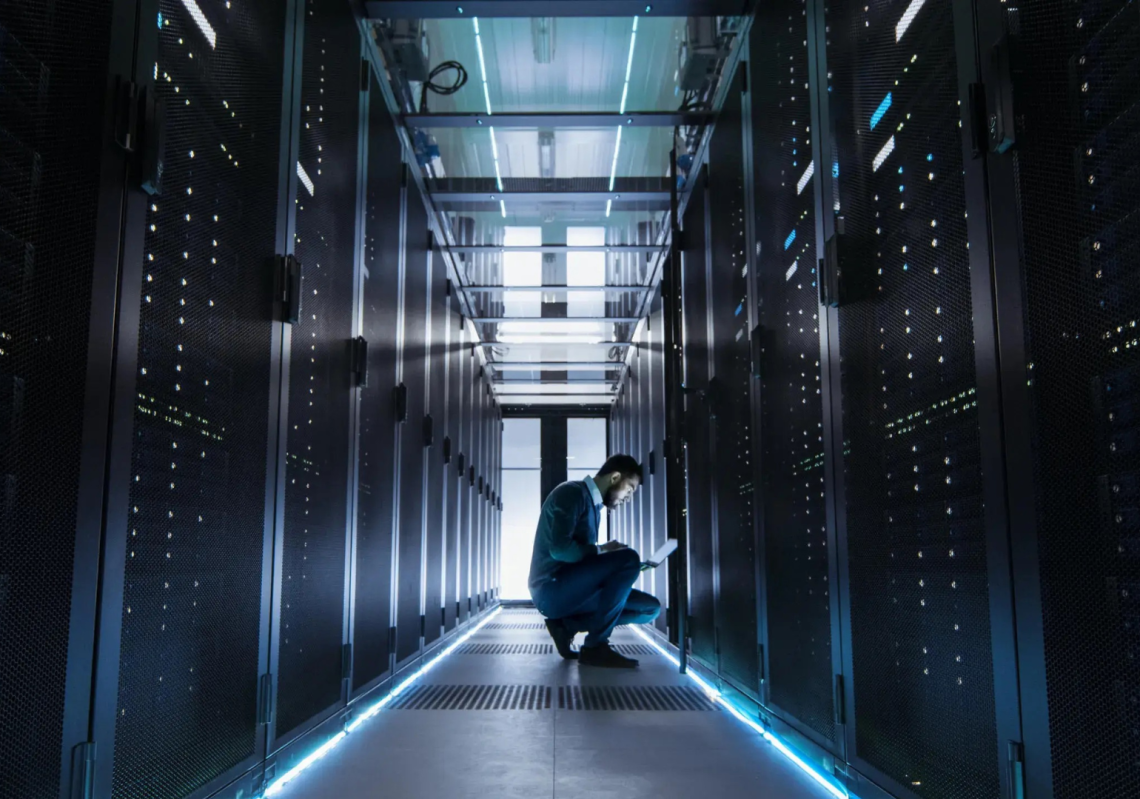Accelerating digitalisation across commercial construction projects such as new factories, warehouses and office blocks means data centres are more critical to building management than ever before.
As their numbers continue to soar, the data centres themselves have become more sophisticated, with some functionality shifting from on-premises physical servers to cloud-based networks.
They have also had to scale up to meet the complex demands of smart cities, advanced manufacturing, machine learning and increasingly digital lifestyles.
In the past seven years alone, the electrical footprint of the world’s data centres has grown by 50 per cent while the data they’ve generated is up by 500 per cent.
“Data centre networking is a key consideration for any organisation planning an infrastructure project,” said Sharon Xiang, Consultant Channel Manager at Schneider Electric. “It can ensure every task progresses quickly and in a hassle-free way by connecting data centre servers and users through advanced equipment and services like routing, switching, load balancing and analytics.”
Schneider Electric offers a range of data centre solutions that optimise processes to improve performance and reduce energy usage. It can also upgrade or retrofit established systems to enhance quality, achieve superior results and future-proof equipment so it remains compatible with advances in IT.
“For optimal functionality, it’s essential to keep track of energy requirements so you can understand what services you might need,” Xiang said. “We help our partners leverage the power of connected infrastructure to achieve the most sustainable, cost-efficient and resilient data centres on the market.”
That includes all the hardware-based infrastructure such as computers, servers, switches, routers, biometric security systems, generators and server racks. These are installed and integrated to keep power resources in the best possible condition and maintain a healthy air flow.
Protection through segmentation
Another important consideration is exposure to harmful viruses or cybercrime. Such risks are reduced by splitting the individual machines in the data centre. If a breach occurs, it will only affect one area instead of the entire IT infrastructure.
“We can advise the design engineers on any project how best to set themselves up to protect against malware and quickly identify threats,” Xiang said.
Schneider Electric’s role, however, goes far beyond the setting-up phase.
“We’re not just a supplier,” she said. “We have a rich industry knowledge built over decades, so we show our partners how to run their data centres in the most efficient and effective way. We then continue advising them through the maintenance phase, which may involve updates or improvements that mean they can better utilise the software and monitor each process.”
Management software
The company’s data centre infrastructure management – or DCIM – software, however, goes beyond basic device monitoring. It helps operators understand how every electrical item is performing and reports concerns about equipment that might cause downtime or inefficient energy usage.
Schneider Electric experts also step in when customer needs evolve, perhaps due to expansion or launching into a different industry sector.
“If there’s been a sustained period of growth then we enter an upgrade phase that involves increasing capacity in such a way that minimises disruption,” she said. “We’re a trusted solution provider precisely because we know exactly how to continue to make life easier for our partners throughout the entire lifetime of a data centre.”
Another area of Schneider Electric’s expertise is designing sustainable data centres that reduce carbon dioxide emissions by boosting the use of renewable energy across data processing, cooling, transport, procurement and supply chains. High-density infrastructure solutions such as pod data centres also help by reducing the space required.
Watch Schneider Electric’s Thought Leaders webinar on sustainable design.
Other advantages that Schneider Electric offers include:
Sustainability
Future data centre owners and operators will need the ability to monitor, benchmark and improve their upstream and downstream supply chain sustainability and their data footprint, a key element that Schneider Electric makes possible.
Efficiency
Its data centres are equipped with intelligent sensors, additional digital services and remote monitoring capabilities to ensure accurate human resources workflows and predictive diagnoses, to reduce the risk of unplanned downtime and faster analysis of capacity forecasts and inventory.
Adaptiveness
The increased emphasis on improving the delivery speeds of goods and services has made its flexible data centre designs essential. They enable the rapid upscaling or downscaling of equipment in response to changes in demand.
Resiliency
Powerful AI tools such as EcoStruxure IT offer new ways to manage at-risk data centre assets and enable quicker responses during unplanned events.
“It’s crucial for building managers and electrical engineers to not only choose the most suitable data centre for their specific needs, but to also have high quality and responsive ongoing support so they continue to reap the benefits as their business adapts to changing circumstances or grows exponentially,” Xiang said.
“That’s what we do for our partners, and why Schneider Electric remains an industry leader.”
Find out more about Schneider Electric’s range of cutting-edge data centre solutions.




